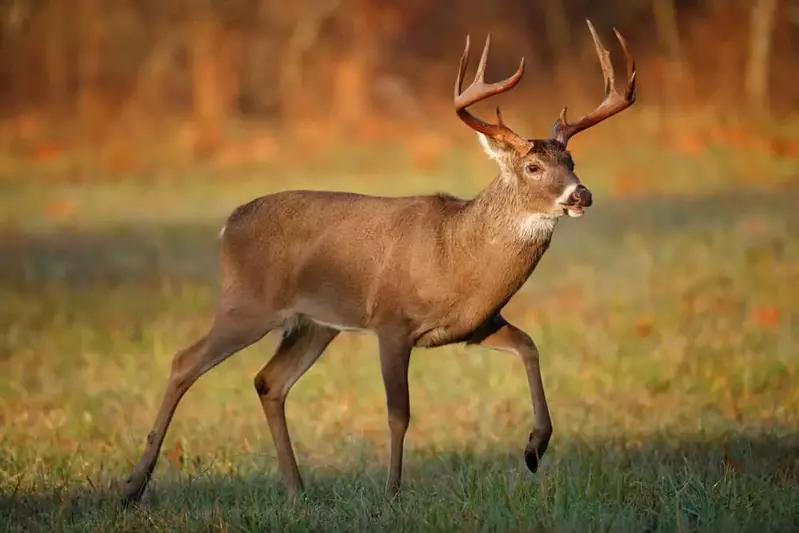Prepare yourself for an immersive journey into the captivating world of deer hunting! This comprehensive guide is your key to unlocking the secrets of this age-old practice, whether you’re a seasoned hunter seeking to refine your skills or a curious beginner eager to learn the ropes. We’ll delve into the rich history and cultural significance of deer hunting, explore the diverse methods and strategies employed, and emphasize the paramount importance of ethical hunting practices. Get ready to deepen your understanding of deer behavior, master hunting techniques, and embark on a rewarding and responsible hunting experience.
Facts About Hunting Deer: Tradition, Impact, and Evolution
Deer hunting boasts a rich tapestry woven from ancient traditions and profound cultural significance. Once a cornerstone of survival, ensuring sustenance for communities, deer hunting today serves as a vital bridge connecting us to our heritage. It’s a practice deeply intertwined with cultural identity, fostering a sense of community and shared values passed down through generations.
Economic and Environmental Significance
Beyond its cultural impact, deer hunting plays a crucial role in supporting local economies and maintaining ecological balance. The purchase of hunting licenses, equipment, and travel expenses injects significant revenue into rural communities, bolstering businesses and creating jobs. Moreover, managed hunting serves as a critical tool for wildlife management, preventing deer overpopulation that can lead to habitat degradation and imbalances within the ecosystem.
A Multifaceted Approach: Diverse Hunting Methods
The world of deer hunting offers a diverse array of methods, each with its own allure and challenges:
- Rifle Hunting: The enduring popularity of rifle hunting stems from its versatility and effectiveness across varying terrains. Mastering rifle accuracy and understanding ballistics are essential for ethical and successful harvests.
- Bow Hunting: Steeped in tradition, bow hunting demands patience, precision, and an intimate knowledge of deer behavior. It’s a close-range pursuit that offers a profound connection to the hunt.
- Muzzleloader Hunting: Bridging the gap between modern and historical hunting methods, muzzleloader hunting provides a unique blend of challenge and tradition. The slower reload time and shorter effective range demand heightened skill and strategy.
- Trapping: While less widely practiced for recreational hunting, trapping plays a vital role in managing deer populations, particularly in areas where hunting pressure is limited or specific management goals require controlled harvests.
Technology’s Transforming Influence
Technological advancements have ushered in a new era of deer hunting, enhancing efficiency and precision:
- GPS Devices: Navigating unfamiliar terrain becomes effortless with GPS devices, ensuring hunters stay oriented and can mark key locations like prime hunting spots or successful harvest sites.
- Rangefinders: Accurate distance estimation is crucial for ethical shots, and rangefinders provide instant readings, eliminating guesswork and promoting responsible hunting practices.
- Thermal Imaging: Detecting the heat signatures of deer in low-light conditions or dense cover, thermal imaging technology offers hunters a distinct advantage while respecting fair chase principles.
How Do You Hunt Deer: Exploring Different Hunting Methods
With a foundational understanding of deer hunting’s significance, let’s explore the exciting strategies for a successful and ethical hunt.
Choosing Your Hunting Style
Selecting the right hunting method depends on personal preferences, skill level, and local regulations. Consider what resonates most with your hunting philosophy and the specific challenges you’re seeking.
Mastering the Hunt: Strategic Approaches
Once you’ve chosen your preferred hunting method, it’s time to strategize your approach:
- Stand Hunting: Patience is paramount in stand hunting. This involves selecting a strategic location, often a tree stand or ground blind, overlooking well-traveled deer paths or feeding areas, and waiting for deer to come into range.
- Still Hunting: This method requires stealth and keen observation skills. Still hunting involves moving slowly and silently through the woods, using your senses to detect deer before they spot you.
- Spot and Stalk: This active hunting technique demands sharp eyesight, patience, and calculated movement. It involves spotting deer from a distance, then using the terrain and cover to stalk within range for a shot.
Prioritizing Safety: The Paramount Rule
Regardless of your chosen method or strategy, safety should always be your top priority. Familiarize yourself with your firearm or bow, practice safe handling techniques, and always be aware of your surroundings to prevent accidents.
What are Deer Hunting Regulations and Ethics?
Ethical deer hunting extends beyond mere adherence to regulations; it embodies a deep respect for the animal, the environment, and fellow hunters.
Rules We Hunt By: A Foundation of Conservation
Hunting regulations vary by state and are designed to ensure sustainable deer populations, promote safety, and maintain ethical hunting practices. Key regulations include:
- Licenses and Permits: Obtaining the appropriate licenses and permits is mandatory for legal hunting and supports wildlife management efforts through funding.
- Bag Limits: Bag limits dictate the number of deer that can be harvested within a specific timeframe, preventing overhunting and ensuring sustainable populations.
- Hunting Seasons: Hunting seasons are established to align with deer biology, protecting them during crucial periods like breeding seasons and when they are most vulnerable during harsh winter conditions.
- Firearm Restrictions: Regulations often specify permitted firearms and ammunition types to ensure humane harvests and minimize risks to public safety.
Hunting Right: Principles of Ethical Conduct
Ethical hunting goes beyond following regulations; it’s about doing the right thing even when no one is watching. Key ethical considerations include:
- Respecting Landowners: Always obtain permission before hunting on private land and treat the property with respect, leaving no trace of your presence.
- Firearm Safety: Handle firearms responsibly at all times, treating every firearm as if it were loaded and practicing safe storage and transportation.
- Ethical Harvest: Strive for a quick and humane harvest, taking shots you’re confident in and minimizing the animal’s suffering.
- Wildlife Conservation: Support conservation organizations, participate in habitat restoration projects, and be a steward of the environment.
The Ripple Effect of Ethical Hunting
When hunters prioritize ethical practices, the benefits extend far beyond the field:
- Ecological Balance: Regulated hunting helps maintain healthy deer populations, preventing overgrazing and ensuring the well-being of other plant and animal species within the ecosystem.
- Economic Vitality: Hunting generates substantial revenue for local economies through license sales, gear purchases, and tourism, supporting businesses and communities.
- Connecting with Nature: Hunting provides an opportunity to disconnect from the stresses of modern life and immerse oneself in the tranquility of nature, fostering an appreciation for the outdoors.
- Strengthening Communities: Hunting often brings people together, fostering a sense of camaraderie and shared purpose, creating lasting friendships and strengthening community bonds.
Understanding Deer Behavior: The Key to Successful Hunting
To become a proficient and ethical hunter, it’s essential to delve into the fascinating world of deer behavior, unraveling the secrets behind their movements and decision-making processes.
Sensory Perception: A Deer’s Superpowers
Deer possess highly developed senses that contribute to their survival in the wild:
- Sight: While not as keen as their sense of smell, deer have excellent peripheral vision, allowing them to detect movement in a wide arc.
- Hearing: Their large, mobile ears grant them exceptional hearing, capable of detecting subtle sounds like a twig snapping or leaves rustling, alerting them to potential threats or the presence of other deer.
- Smell: A deer’s most powerful sense, their sense of smell, is far superior to a human’s, enabling them to detect predators, locate food sources, and even communicate with other deer through scent marking.
Deciphering Deer Patterns
Understanding deer patterns is crucial for anticipating their movements and increasing your chances of a successful hunt. Consider their daily routines:
- Feeding Patterns: Identify preferred food sources and observe their feeding habits, noting the times of day they frequent certain areas.
- Bedding Areas: Locate areas where deer seek refuge and rest during the day, characterized by dense cover and seclusion.
- Travel Routes: Observe the trails and corridors deer use to move between feeding areas, bedding sites, and water sources.
Seasonal Influences
Deer behavior is significantly influenced by seasonal changes:
- Spring: As food becomes more abundant, deer focus on foraging and replenishing their bodies after the lean winter months. Fawns are born during this time, making does particularly cautious and protective.
- Summer: Deer continue to feed heavily throughout the summer, building up fat reserves for the upcoming winter. Bucks are growing their antlers, which are nearing full size.
- Fall: The rut, or breeding season, dominates deer behavior in the fall. Bucks become less cautious and more vocal as they seek out does.
- Winter: Food becomes scarce in winter, and deer conserve energy by reducing their activity levels and seeking out sheltered areas.
The Hunter’s Edge: Utilizing Technology and Insights
Leveraging technology and keen observation skills can provide valuable insights into deer behavior:
- Trail Cameras: Strategically placed trail cameras capture images and videos of deer activity, revealing their movement patterns, preferred travel routes, and feeding times.
- Tracking Devices: GPS tracking collars fitted on deer provide researchers and wildlife managers with detailed data on deer movements, habitat use, and home range sizes.
- Field Observation: Spending time quietly observing deer in their natural habitat can be invaluable. Pay attention to their body language, vocalizations, and reactions to stimuli to gain a deeper understanding of their behavior.
By continuously expanding your knowledge of deer behavior, you’ll refine your hunting strategies and increase your chances of a successful and ethical harvest. Remember, becoming a skilled deer hunter is a journey of lifelong learning and a deep respect for the natural world.














